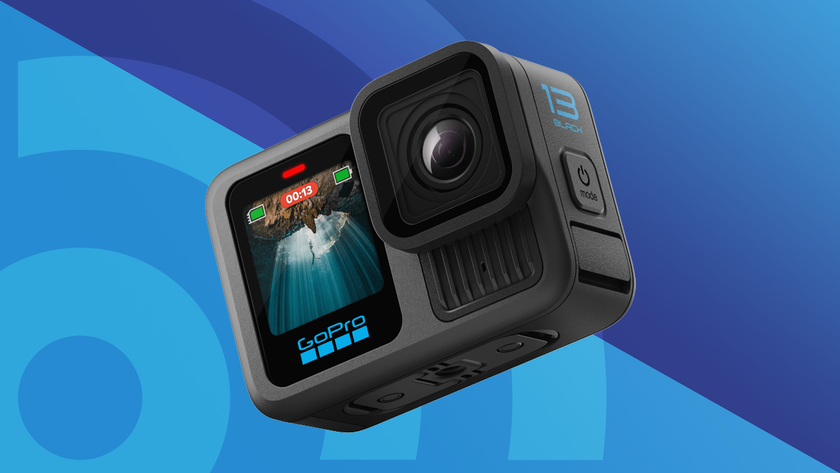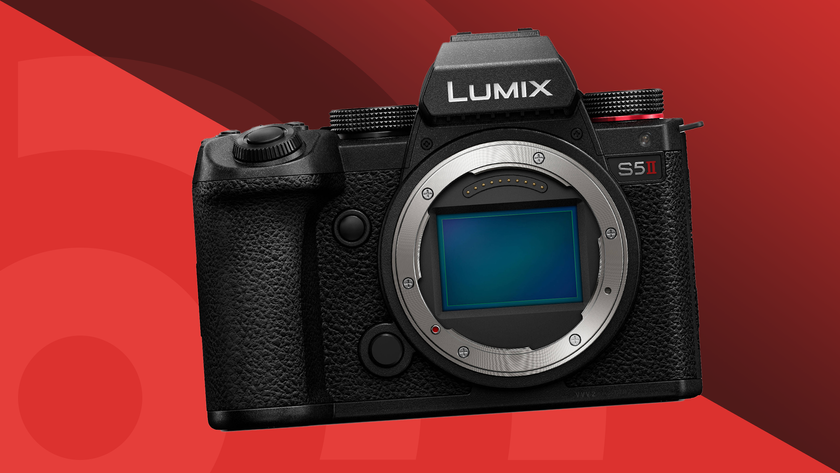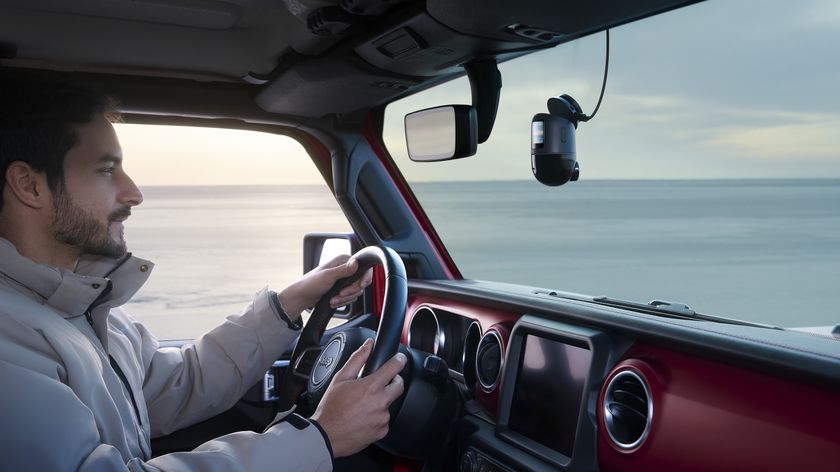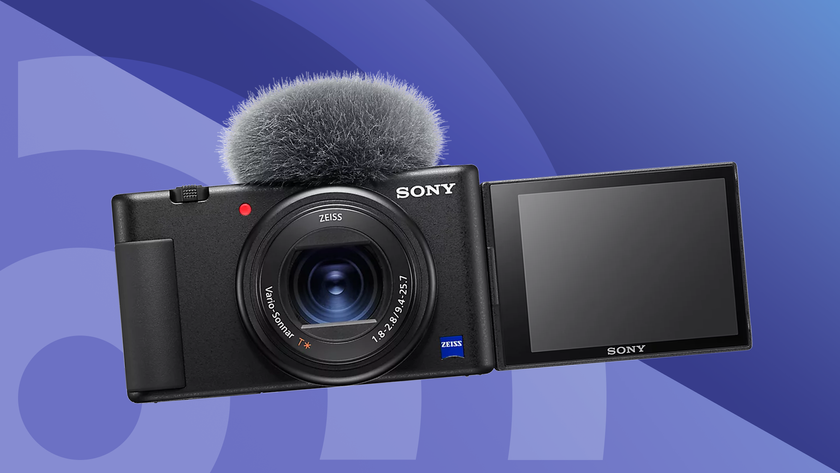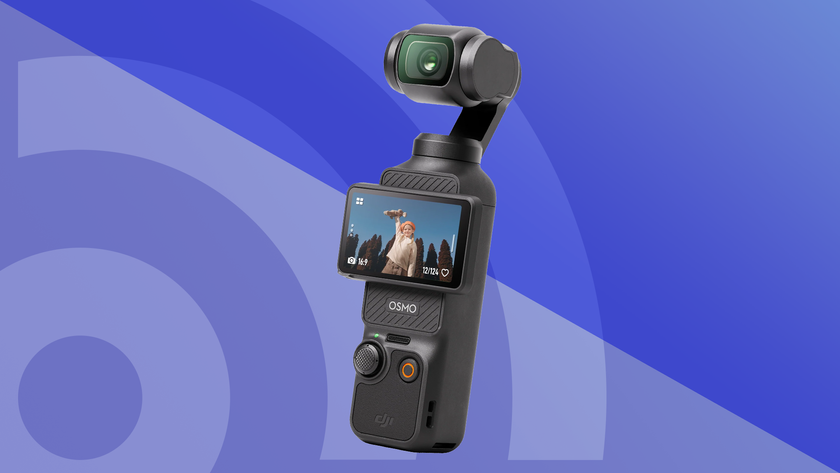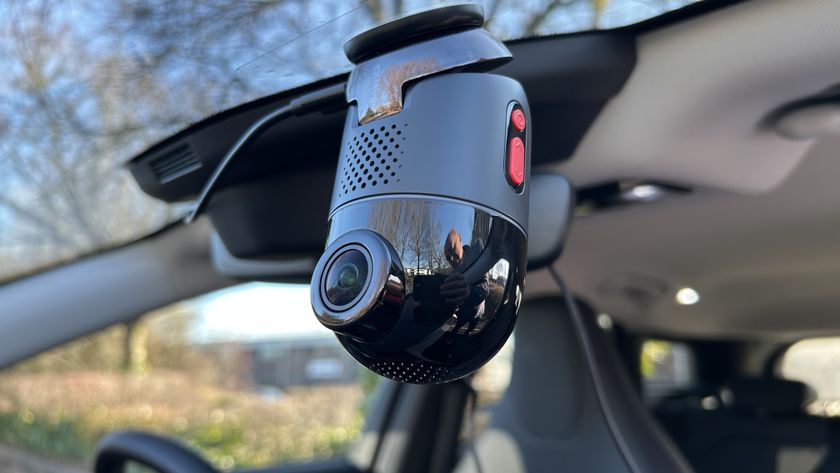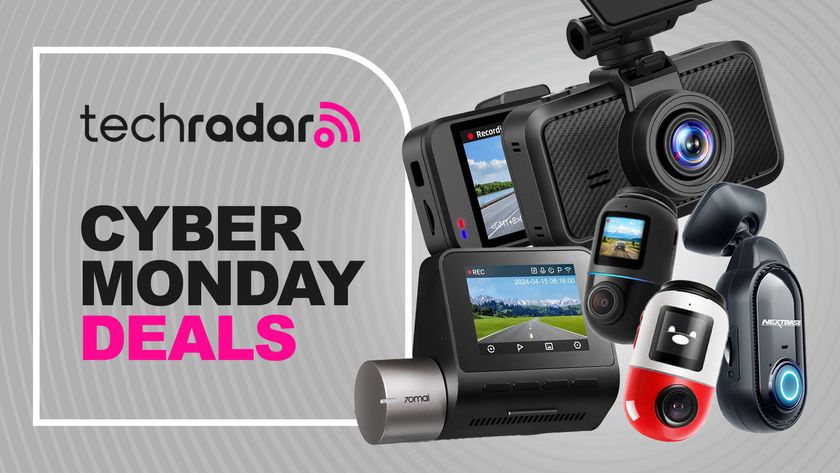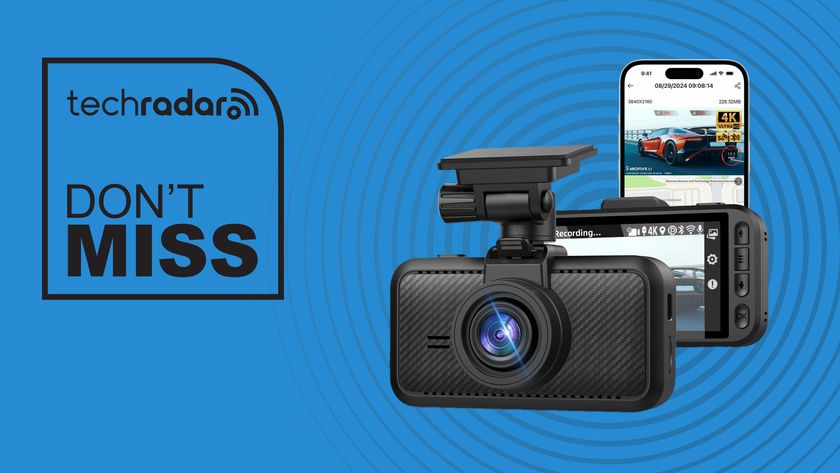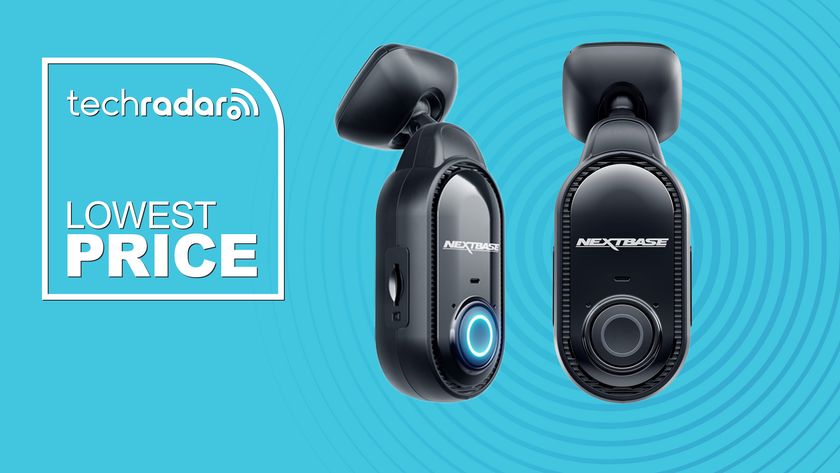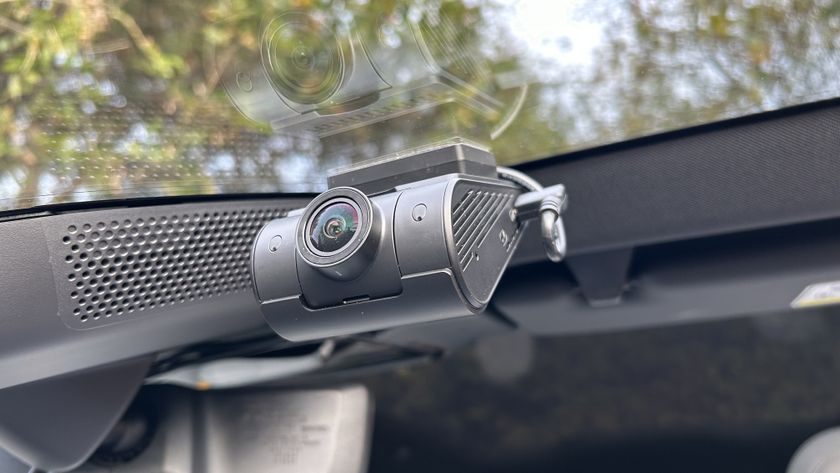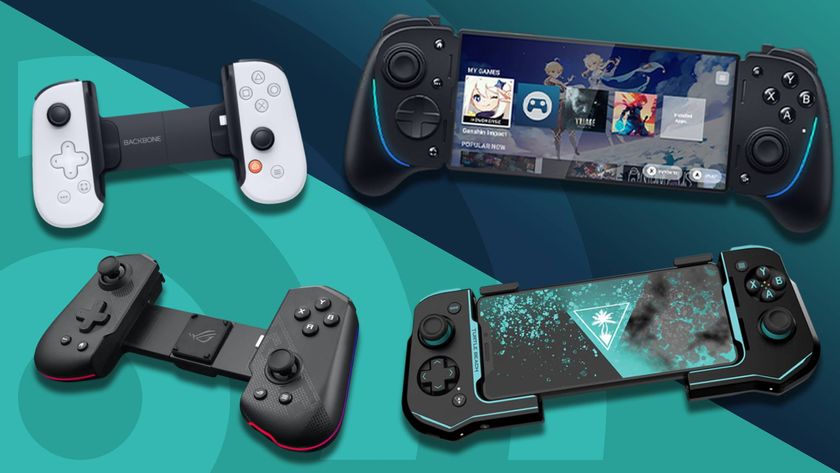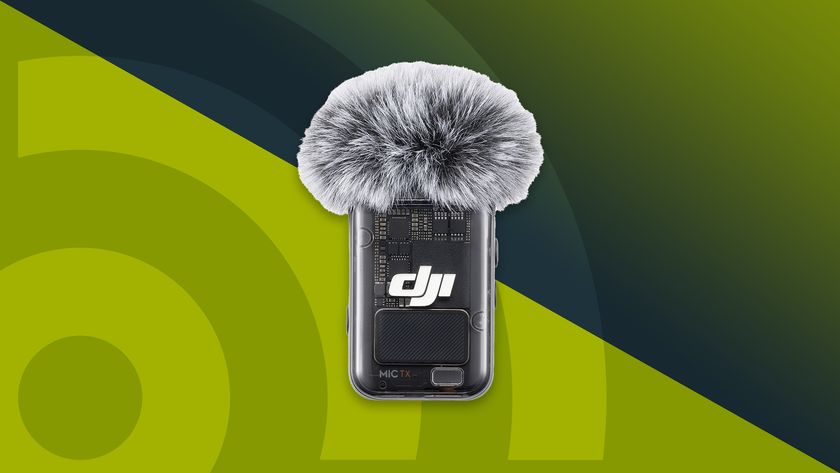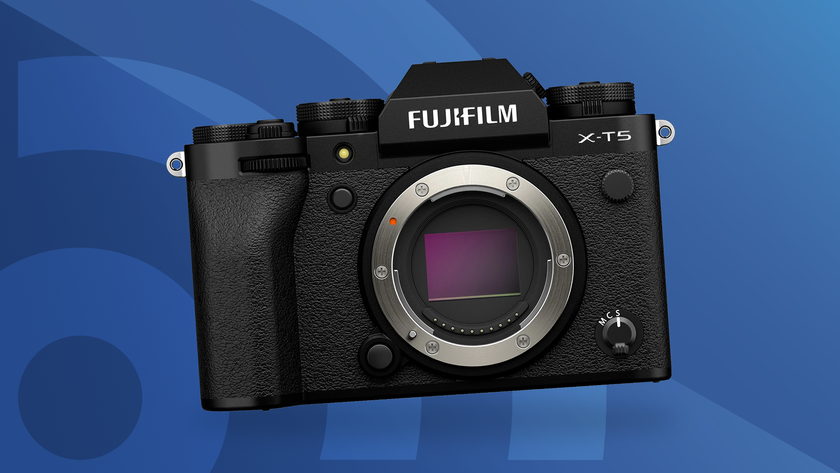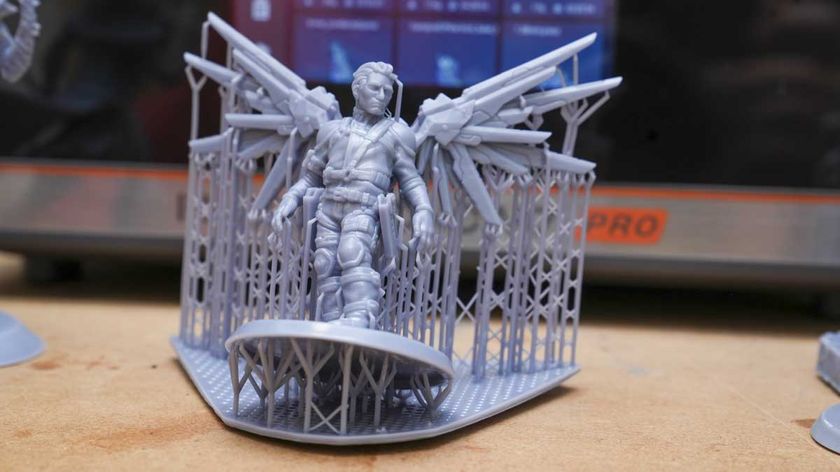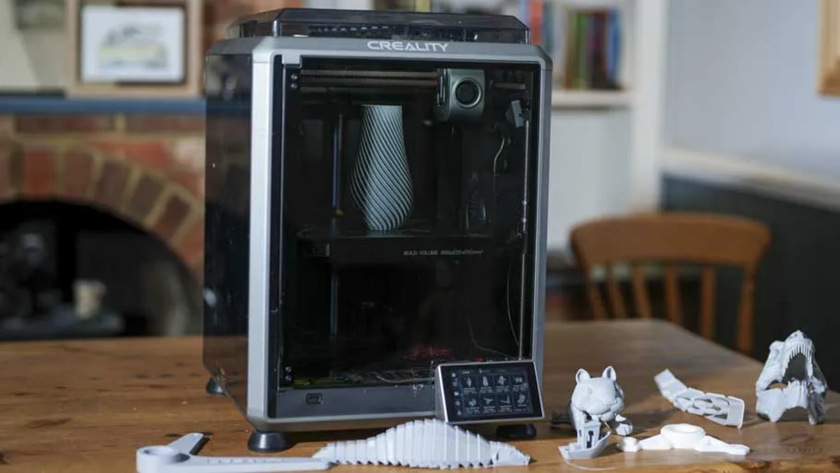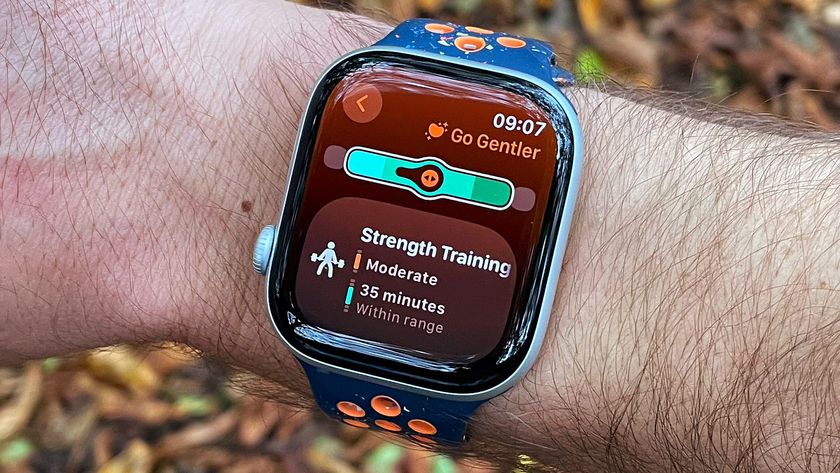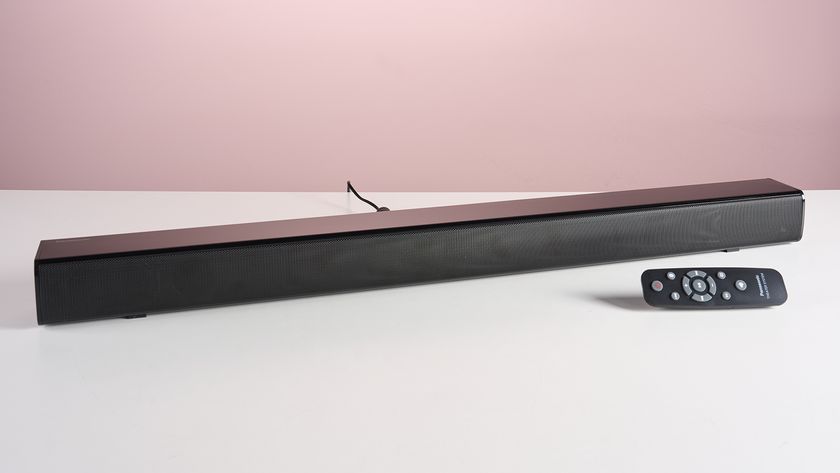The best dash cam 2025: finest car cameras for every budget
The best dash cams from Nextbase, Garmin, Viofo and more
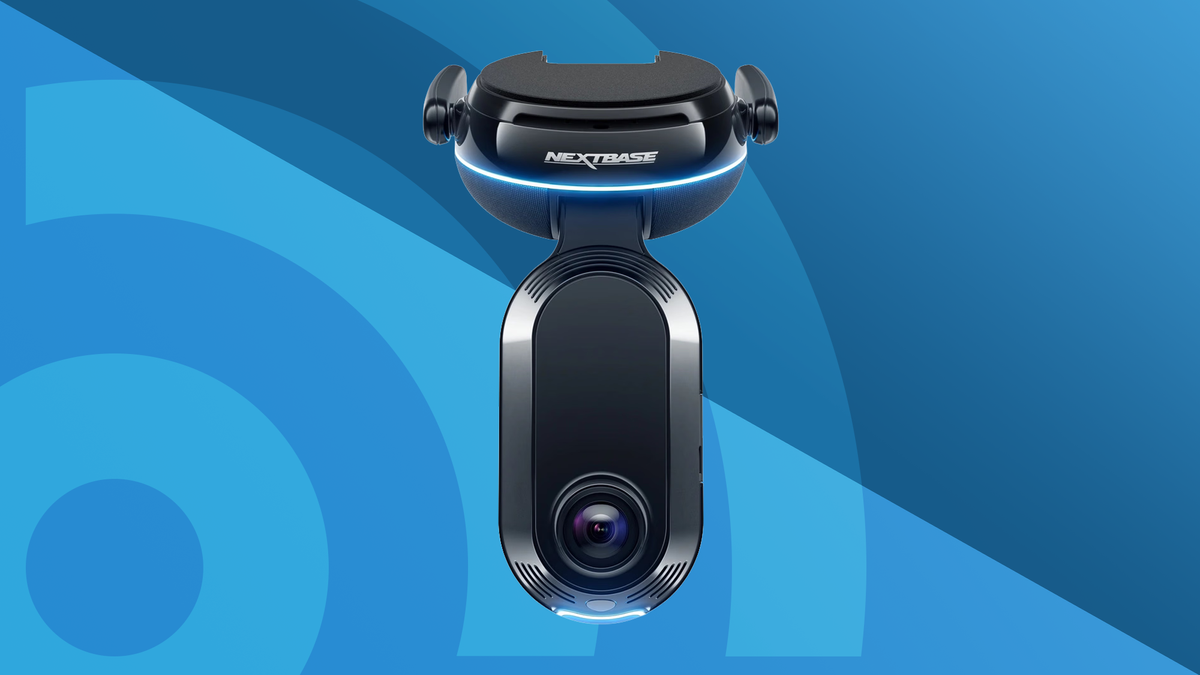
Really there's only one thing the best dash cams need to do well: record sharp footage of what’s happening on the road and around the car. We should know – we've completed in-depth behind-the-wheel reviews of over 30 different dash cams by Garmin, Nextbase, 70mai, Viofo and more.
Each option in this guide ticks that important box, and most of them offer additional features too, such as GPS, parking surveillance and app support. Whether you need those tools will depend on your expectations and budget. That’s why we’ve divided our guide based on different use cases.
If we could only pick one dash cam to install in our car, it would be the Viofo A329 which we awarded 5 stars. It shoots crisp 4K video up to 60fps, and is the complete package with the option for a rear camera. The Nextbase iQ is another premium performer, equipped with world-first smart features, while the Garmin Dash Cam Mini 3 is a simple, compact and affordable package for whom the other options are a little overkill.
Our expert team has spent hours behind the wheel, extensively testing all kinds of dash cams. We run each model through several real-world scenarios, from setup to night-time driving. Our ranked list is based on the results of these reviews, plus there are plenty of other options that didn't make the cut in an Also Consider section, so you'll be sure to find the best dash cam for your needs, together with links to the best deals.

Tim is TechRadar’s Camera’s Editor. Tim has more than 15 years’ experience in the photo video industry, as both a freelance photographer and tech journalist. In that time, Tim has tested a whole range of photography kit, including many of the best dash cams. From the UK to Nairobi, Tim’s spent a lot of time on the road – so he knows what a good dash cam needs to do. Tim notes, "many of the dash cams in this list have advanced features, such as GPS, surveillance and driver assistance modes. If you don't need these tools, you can save money by choosing a simpler model."
Top 3 picks
If you want a shortcut to the best dash cams for every driver, our quick round-up below will give you an overview of the top options for every budget. When you find one that fits the bill, use the links beneath to jump down to our full write-up.
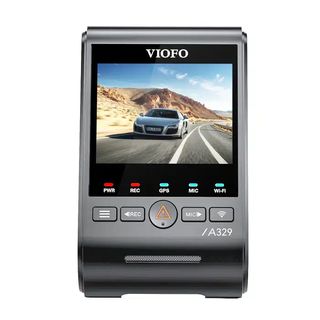
Best overall
With impressive 4K video quality up to 60fps and a flagship feature set, the Viofo A329 is a premium all-rounder for most people.
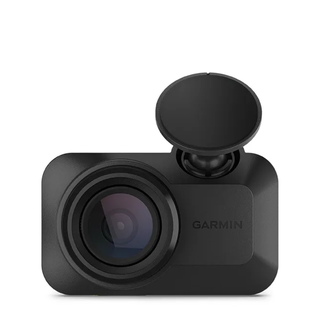
Best budget
Garmin's tiny dash cam gets a small upgrade, with a landscape design and polarizing filter complementing Full HD footage with HDR.
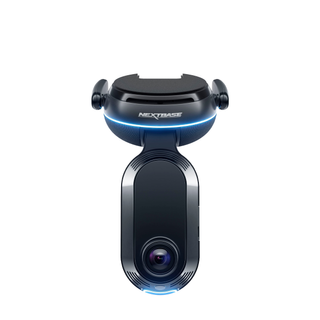
Best next-gen cam
If you’re happy to pay for a subscription, the Nextbase iQ is a feature-packed 4K dash cam that's clever yet easy to use.
Best by use-case
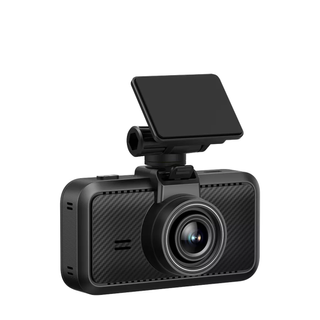
Best cheap 4K
Sitting well below $100 / £100, the Miofive S1 is probably the best value dash cam available right now, with 4K video and built-in GPS.
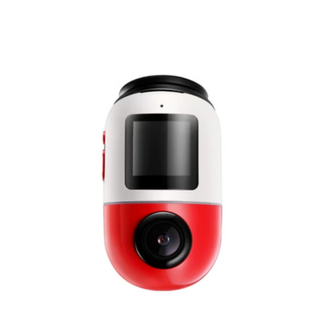
Best 360-degree
This unique 360 dash cam covers an omni-directional view, ideal for capturing both your journeys and your in-car karaoke.
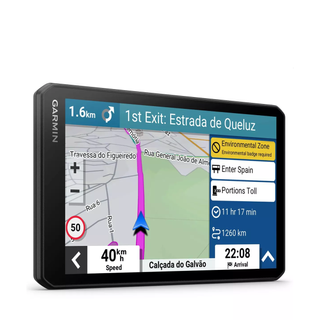
Best for analogue vehicles
A dash cam and sat nav combo, the Garmin DriveCam 76 is a feature-packed tool for vehicles without an infotainment system.
The best dash cam in 2025
Why you can trust TechRadar
Below you'll find full write-ups for each of the best dash cams in our list. We've tested each one comprehensively, so you can be sure that our recommendations can be trusted.
The best all-rounder dash cam





Specifications
Reasons to buy
Reasons to avoid
Viofo A329 sample footage
✅ You want superb 4K footage: Having crisp and clear 4K 60fps video can make all the difference in the event of an incident or insurance claim. The quality of the rear-facing camera impresses, too.
✅ You like front and rear coverage: A two-channel, setup keeps all bases covered. And with the cameras being hardwired into a vehicle, you get powerful features.
❌ You want an easy setup: There’s a lot of cabling to plumb in and, while the connectors are excellent quality, they are hard to undo if you’ve plugged the ends in the wrong way around.
❌ You just need the basics: The Viofo A329 Dash Cam's 4K video, rear camera support and various features might be more than you need when a cheaper stripped-back dash cam could be sufficient for you.
It might be expensive, but the two-camera Viofo A329 Dash Cam bundle is worth the outlay. Not only do you get crisp 4K video up to 60fps from the main camera that is able to capture fine details at speed, the rear-facing unit is a great supplement with decent 2K footage of its own. We also found that footage captured after dark was equally impressive than our clips taken on dull and gray days, with both front and rear cameras adept at picking out little details, such as license plates and road signs.
All of that data can be stored onto micro SD with generous 512GB capacity compatibility, or SSD up to 4TB. Files can be quickly loaded to Viofo's app, which by the way is a dream to use. Initial setup will test your skills (and patience) – there is more work involved in getting it all wired in – but those who persist will enjoy the fruit of their labor – being rewarded with a premium performer. If money is no object, then you'll struggle to find a dash cam with better quality video.
- Read our in-depth Viofo A329 review
The best budget dash cam





Specifications
Reasons to buy
Reasons to avoid
Garmin Dash Cam Mini 3 sample footage
✅ You want a hidden dash cam: Compact proportions mean the Mini 3 can just about hide behind your rear-view mirror, so there's no impact on forward visibility.
✅ You prefer a simple setup: Garmin has kept the Mini 3 simple to set up and use, meaning it's a reliable tool that’s easy to install and runs faithfully in the background.
❌ You already own the Dash Cam Mini 2: A polarizing filter and landscape redesign are the only upgrades to speak of here, so there isn't a case for upgrading.
❌ You need 4K video footage: The Mini 3 is limited to 1080p Full HD. You’ll need to spend more on a premium model for higher resolution video.
If you want a small, simple dash cam to set and forget, we recommend the Garmin Dash Cam Mini 3. In our tests, its compact design could be easily hidden behind the rear-view mirror, while its simple interface made it easy to set up and use. It also captured high-quality Full HD video with HDR. Granted, the same can also be said of the Dash Cam Mini 2, and if you’re already an owner of that device, there’s not really a case for upgrading.
Like the Mini 2, you don’t get GPS or a display here. Control is by way of the Garmin Drive app, which works well for changing settings and reviewing saved footage. What’s new is a landscape design, as well as a built-in polarizing filter. The latter is designed to reduce windshield reflections, although to our eyes, our review footage looked pretty similar to video from the Mini 3. Still, if you’re buying your first dash cam, or looking for a smaller one, the Dash Cam Mini 3 gets all the right things right.
- Read our in-depth Garmin Dash Cam Mini 3 review
The best smart dash cam





Specifications
Reasons to buy
Reasons to avoid
Nextbase iQ sample footage
✅ You want an all-in-one dash cam: With a full suite of clever safety and security features, the Nextbase iQ is the complete dash cam package.
✅ You want a future-proof model: Firmware updates are in the pipeline which will add additional functionality to the iQ’s already impressive arsenal.
❌ You don’t need a complex camera: If you only want to capture video of the road, there are simpler dash cam options for a lot less money.
❌ You want a subscription-free dash cam: Basic modes are free, but you’ll need to pay subscription fees for the full set of Nextbase iQ features.
A smart surveillance camera for your car, the Nextbase iQ is as feature-packed as dash cams come. Available in 1K, 2K and 4K variants, it’s a premium solution with a suite of connected skills. That includes parking assistance, a voice-activated Witness Mode and the ability to check in on your vehicle via the Nextbase iQ app, as well as GPS, Bluetooth and Wi-Fi connectivity. All three versions include an interior camera, and there’s an optional rear-facing unit. You will need a paid subscription to get the full benefit of its abilities, which means the iQ can quickly become a costly bit of kit.
But our tests found that it’s also an impressive one. Setup proved simple in our review, while the app made it easy to access its many features. Footage and audio from our 4K review unit was predictably excellent, too. Because powered is delivered directly from the car’s battery, the system remains active even when the engine’s off. It will be overkill for many road users, but if you want a complete, all-in-one camera to monitor your car at all times, the Nextbase iQ is as clever as they come.
Too expensive? Nextbase recently unveiled the Piqo, which is a simpler and much cheaper sibling with light versions of the iQ's smart features.
- Read our in-depth Nextbase iQ review
The best cheap 4K dash cam





Specifications
Reasons to buy
Reasons to avoid
Miofive S1 Ultra sample footage
✅ You want 4K video for less: 4K footage is sharp, and suffers from very little noise too.
✅ GPS is a must: Not many dash cams at this price include GPS which adds key data to recordings and can be invaluable proving when and how an incident occurred.
❌ You want high frame rates: Whatever the resolution, the S1's video frame rates are capped at 30fps. Higher frame rates like 60fps can capture smoother footage.
❌ You'd rather avoid AI alerts: The S1's AI features feel superfluous, such as its driver alerts and warnings about supposed harsh driving.
You can pick up the Miofive S1 Ultra for well under $100 / £100. That's impressive when you consider that it's a 4K dash cam equipped with GPS and a 5GHz Wi-Fi connection for fast data transfers. That's a rare combo at this price point, especially given how impressive we found the quality of its video footage in testing: with sharp detail and admirable noise control in low light, this is the real deal.
If there's one thing we'd improve based on our review, it would be the ability to record at 60fps – even if just in 1080p Full HD. Sadly the S1 is capped at 30fps. But otherwise, the S1 is hard to fault. It's not the smallest dash cam around, but we found it easy to set up and get going. You also have option to bundle it with Miofive's rear dash cam (2K and 4K options are availability) for full coverage. Considering all of that, we think this is the best 4K dash cam you can get for less than $100 / £100.
- Read our in-depth Miofive S1 review
Best 360 degree





Specifications
Reasons to buy
Reasons to avoid
70mai Omni sample footage
✅ You'd like 360-degree coverage: The Omni can rotate through to cover a full 360 degrees and film from any angle.
✅ You enjoy a user-friendly experience: The Omni has charming 'human-like' display graphics.
❌ You need 4K video quality: Topping out at 1920x1080 Full HD video up to 60fps, the Omni's video resolution is bettered elsewhere.
❌ Auto syncing your footage to the cloud is helpful: You can sync your footage to the cloud, but only via an optional 4G hardware kit.
There's no dash cam quite like the 70mai Omni. It's a single camera with a 140-degree field of view and a trick up its sleeve: it can rotate to provide full 360-degree coverage from its position on the windshield. That means you can record your journeys out the front like any other dash cam, or turn it to film inside the cabin of your vehicle. Video resolution tops out at 1080p up to 60fps, so footage isn't the most detailed, but we were impressed by the low-light performance of the f/1.8 lens in testing.
In our review, we found the Omni well-designed with a user-friendly experience, complete with fun graphics and animations on the display when you interact with it. It also benefits from AI-powered surveillance features to keep your vehicle safe, such as motion detection and threat-level processing. As far as single dash cams go, this is one of the most fun to use, plus the list price is reasonable – though you'll need to buy the 4G hardware kit if you want to backup to the cloud automatically.
- Read our in-depth 70mai Dash Cam Omni review
Best for older cars without an infotainment system





Specifications
Reasons to buy
Reasons to avoid
Garmin DriveCam 76 sample footage
✅ Your vehicle has no infotainment system: With features like mapping and forward collision warnings, the DriveCam 76 is ideal for older vehicles without such systems as standard.
✅ You want an all-in-one system: Combining a dash cam and a sat nav system means fewer devices mounted to your windshield, giving you a clearer view.
❌ You have a small windshield: Because it’s larger than many dash cams, the DashCam 76 can feel like an obstruction in vehicles with shallow windshields.
❌ You’re on a tight budget: Its multiple talents mean the DriveCam 76 demands a fairly high price. If you won’t use all of its features, you’ll find better value in standalone cameras.
Combining a dash cam and a sat nav, the Garmin DriveCam 76 is a feature-packed tool for vehicles without an infotainment system. In testing, we found its 7-inch display intuitive to use. It makes Garmin’s rich mapping visuals easy to follow, while navigation is clear and well-timed, complemented by live traffic updates when paired with your smartphone’s data connection. The unit itself is much larger than many rivals, though, which can make it tricky to place without obstructing the driver’s view. Helpfully, both the display angle and camera lens are adjustable, so you can find the right position between road and driver.
Full HD footage is shot in HDR at 30fps, delivering balanced exposure and enough detail to make number plates legible. That said, we found that video suffers from noticeable stabilization wobble. This distortion doesn’t reduce the detail, but footage is worse than from other Garmin dash cams. You’ll also find better value dash cams if you don’t need features such as smartphone notifications and weather updates. But if you want a dash cam with added smarts, this is a great choice.
- Read our in-depth Garmin DriveCam 76 review
Specs comparison
Model | Video resolution | Viewing angle | GPS | Memory |
Viofo A329 | 4K 60p | 140 degrees | Yes | microSD / SSD |
Garmin Dash Cam Mini 3 | 1080p | 140 degrees | No | microSD |
Nextbase iQ | 1k, 2k or 4k options (front) / 1k or 2k (cabin) / 2k (rear) | 140 degrees (front) / 180 degrees (cabin) / 140 degrees (rear) | Yes | microSD / cloud |
Miofive S1 | 4K 30p | 140 degrees | Yes | microSD |
70mai Dash Cam Omni | 1080p | 140 degrees | Yes | eMMC built-in 32GB / 64GB or 128GB |
Garmin DriveCam 76 | 1080p | 140 degrees | Yes | 16GB microSD (dash cam, included) |
Also consider
We've reviewed plenty more dash cams than the ones included in this shortlist, and there are a number of honorable mentions we'd be remiss to ignore.
Garmin Dash Cam X310: Garmin's best-ever dash cam records sharp 4K video with HDR, yet it's small and easy to use. It's also feature-packed, with GPS, a 2.4in touchscreen, plus it can be accessed remotely via the Garmin Drive app (if you pay for a subscription). It's not a huge upgrade from Garmin's Dash Cam 67W, but for everyone else, this will feel like a top-tier product that is built to last.
Nextbase Piqo: If you like the sound of the Nextbase iQ but can't quite stomach the price and the ongoing subscription costs, the Piqo is the perfect low-cost alternative from the same brand, offering 'Lite' versions of many of the iQ's smart features, in an attractive and compact package.
Nextbase 622GW: 4K video resolution, an excellent Night Vision mode, a built-in polarizing filter plus image stabilization combine for excellent quality footage, making it extremely easy to pick out number plate and vehicle details in all conditions. The addition of Alexa voice control and What3Words emergency geolocation are welcome added bonuses.
Nexar Pro: This five-star dash cam is a superb option for high mileage drivers, being a dual-cam solution that can record video both inside and outside a vehicle. It's a little long-in-the-tooth now and can only shoot 1080p video and not 4K, but unlimited cloud storage is included.
Vantrue E1: A well-rounded choice which pairs a compact built that tucks neatly behind your rearview mirror with crisp 2.5K video and 1080p video up to 60fps, as well as built-in GPS.
Thinkware X1000: Another option that feels unique from all the other choices here. It has a bigger touchscreen and easy to use interface, meaning you don't really need to rely on a companion app like other options. It can be purchased as a dual camera bundle, however it lacks built-in GPS.
Miofive Dual Dash Cam: If you like the sound of the Miofive S1, our pick for a sub $100 / £100 4K dash cam, you can find an S1 'Ultra' version that's a dual camera setup, or indeed Miofive's high-end model, the Dual Dash Cam, another five-star rated dash cam.
Vantrue N2 Pro: An honorable mention ideal for ride-share drivers.
Viofo A229 Pro: Another excellent all-rounder.
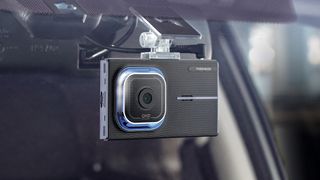
How to choose the best dash cam for you
How to choose the best dash cam for you
The best dash cams can have anything from one, two or even three cameras. Single camera dash cams record the outside view from your windscreen, dual dash cams add an inside facing camera which is especially useful for ride-share drivers like taxis, while three-camera dash cams are more for professional drivers clocking up the miles, adding an additional viewpoint from the outside of the vehicle, being especially handy for trucks.
Video resolution
Video resolution is a key consideration when choosing a dash cam, as explained below. Most dash cams in 2024 can record footage in Full HD, which is generally enough to identify large details in a video clip. Sharper 4K dash cams tend to cost more, but capture video at a higher resolution. This makes it easier to pull out crucial details such as number plates, which mean 4K dash cams generally offer more reassurance from a safety perspective.
Video frame rates
Video frame rates are also important. Most dash cams can record at 30fps, which is fine for reviewing footage at full speed, but the best models can capture action at a smoother 60fps. This gives you the option to slow down footage after the fact, making it easier to pick up details at half-speed. It’s increasingly common to find dash cams that can capture Full HD video at 60fps, but 4K 60fps recording is generally reserved for professional dash cams. Certain models, such as the Nextbase 622GW, also feature digital image stabilization, which helps to smooth out footage on bumpy roads.
Features
There are also a wealth of features to consider, including a touchscreen display, a companion app, GPS, parking surveillance, voice control, sat nav and what3words to name but a few.
If you drive an older car without an infotainment system, then it’s worth getting a dash cam with sat nav, but there’s little point if your car already has sat nav. GPS location data is handy when recording incidents, while some even include what3words geolocation data which offers the most precise way of pinpointing your vehicle and super handy should you become stricken.
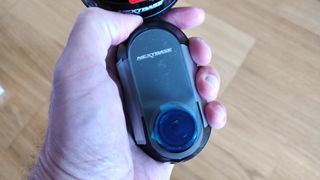
Getting started with a dash cam
The overall experience installing, getting started and ease of use on the go varies wildly from dash cam to dash cam. For the most part, dash cams mount somewhere along a car's front windscreen or windshield. Of course, wherever you place your dash cam must not block your view of the road.
The advent of rear-facing cameras (or complete kits that contain both front and rear) require a little extra installation, as these often involve cables that run from front to back. Expect some fiddly work involving the car's headliner to get these fitted correctly.
Dash cams record smaller snippets of footage, usually in increments of one to two minutes at a time. The cameras continually record over the oldest clip in order to keep the memory card from filling up as well.
While older models typically required the user to manually save or tag the appropriate clip in the event of an accident, new G-Sensor-based incident detection technology has taken over, and now takes care of this automatically.
There are also dash cams that boast additional features that, just like any other technology, translate to a higher asking price. In addition to better video quality like 4K, night vision and built-in Wi-Fi or Bluetooth for easy file transfer may also be included.
A rise in popularity of voice control has also made its way over to the humble dash cam, so expect Alexa integration and other such voice-activated technology at the very pinnacle of the range.
Numerous parking modes are also possibilities. These use a time-lapse feature as a surveillance function to capture details of those irksome car park prangs when you're off running errands.
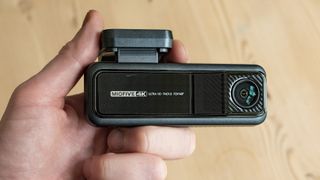
Is it worth having a dash cam?
Yes, absolutely. Some drivers might not like the idea of a camera constantly monitoring their vehicle, but some models of dash cam (like the Garmin Dash Cam Mini 2) are compact and subtle enough to almost disappear behind the central rear view mirror. In other words, once they are up and running you soon forget about them; they just sit there, quietly keeping an eye out, ready to save footage if you’re caught in an accident.
If the worst were to happen, and you need to prove your innocence, the dash cam’s footage could do exactly that. This footage can also be set to include your speed, along with the time and date to help reinforce the validity of your evidence if blame is disputed by the other party. As well as monitoring the road ahead, dash cams can be used to record out of the rear windscreen too, recording footage if you are unfortunate enough to be rear-ended by another motorist.
Even if you're not directly involved in a collision, dash cams can still be useful. Many have a button for quickly saving the last few seconds of video. That way, if you need something ahead that you think needs recording, like an accident between two other vehicles, an example of bad driving, or something else noteworthy, you can provide that evidence to whoever might need it. Another useful feature of some dash cams is how they will call the emergency services if a crash is detected and you don’t respond; they can then share your location and ensure help is on its way.
Furthermore, many dash cams come with additional driver assistance features. These include alerts to let you know about nearby speed cameras and red light cameras, plus a prompt to tell you the vehicle in front has set off – just in case you weren’t paying attention while sat in traffic.
Lastly, some dash cams can be permanently installed in your vehicle and hard-wired, giving them a constant power supply. When paired with a special parking mode, this enables the camera to sense impacts and record footage while the car is parked, potentially gathering useful evidence of your neighbor’s poor parking.
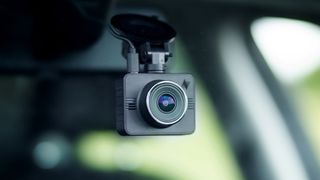
Can a dash cam drain your car battery?
Different dash cams use different power sources, so it's always worth checking how your new dash cam is powered if you're concerned about draining your car's battery.
Some dash cams have internal power, or can easily be charged using external power sources. However, the rest use the cigarette lighter/USB port in your vehicle or need to be hard-wired, meaning they do use your car's battery.
If you use the cigarette lighter/USB port to power your dash cam, then leaving it plugged in overnight might drain your car battery, depending on if your vehicle supplies constant power to the ports. Hard-wired dash cams can be set up to switch on with the car ignition in some vehicles to save battery, too.
If you were planning on using your new dash cam for security purposes, you might want to consider choosing a dash cam with motion detection and using an external power source to make sure you don't drain your car battery.
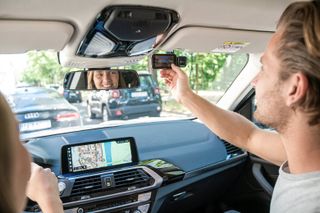
Is a GoPro better than a dash cam?
GoPro cameras are some of the best action cameras you can buy. They can be easily mounted to your dashboard and set to record video on a rolling loop. Because GoPro cameras are compact, they shouldn’t obstruct your view of the road ahead, while the latest models are capable of capturing 5.3K videos which is sharper than 4K.
However, there are certain factors which make a dedicated dash cam better than a GoPro for recording the road. The price difference between a GoPro Hero 13 Black and a premium dash cam such as the Garmin Dash Cam X310 is less than you might think. But what you don’t get with a GoPro camera are the more advanced features associated with a high-spec dash cam, such as collision detection or parking protection. You’ll also need to manually set a GoPro to record every time you get behind the wheel, even if its power cable is connected to your vehicle.
So if you already own a GoPro, pairing it with a dashboard mount or windshield suction cup is an easy way to record video while you’re driving. We even have a dedicated guide on how to use a GoPro as a dash cam for your car. However, if you’re looking for a comprehensive solution to capture in-car video, it’s worth considering a dash cam.
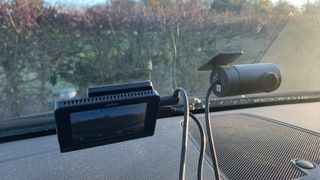
Are dash cams legal?
Using a dash cam is generally legal in both the UK and the US. In fact, certain bodies in both countries actively encourage the use of dash cams to reduce insurance premiums. That said, there are a few basic rules to follow to ensure your dash cam usage stays on the right side of the law.
A dash cam shouldn’t obstruct your view of the road ahead or distract you while you’re behind the wheel. For this reason, some people prefer to choose a model without a display. In the US, many states have regulations governing where you can mount a dash cam. Several prohibit you from fitting one to your windshield, for example.
Privacy regulations are another factor to consider. As there is no reasonable expectation of privacy on public roads, it’s generally legal to record with a dash cam while driving. However, this changes on private property, such as a person’s driveway. While dash cam recordings can usually be justified on the grounds of safety and security, it’s important to act reasonably and be mindful of where and what you record.
This is particularly the case for professional drivers. If you’re a taxi driver, for example, you should inform passengers that your vehicle is fitted with a dash cam, particularly if it’s recording audio. In the US, several states only permit sound recording with the permission of everyone in the vehicle.
You should also think carefully before sharing any dash cam footage online. Uploading videos that identify individuals without their consent could breach data protection laws. It’s always safer to blur details such as registration plates and faces when publishing any dash cam clips.
It’s worth nothing that a number of European countries restrict the use of dash cams, so be sure to familiarize yourself with regional rules.
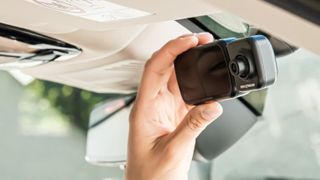
What is loop recording?
Loop recording allows dash cams to continuously record video footage to their built-in storage or memory card. The setting automatically overwrites the oldest clips on your camera with new ones when its storage becomes full. This way, it can keep recording without requiring you to pull over and manually delete unneeded clips. This gives you the reassurance that there will be no gap in your driving log.
By default, dash cams save video clips in sequential order. Loop recording usually works by splitting these clips into preset intervals based on file size or time, such as 2-minute or 5-minute segments. By dividing recordings like this, dash cams can write over small parts of a longer video without erasing the entire thing at once. This can also make it easier to locate clips of specific moments, without having to scan through lengthy recordings.
To stop important clips from being overwritten, many of the best dash cams can automatically detect potential incidents and flag the relevant footage to protect it from deletion. Most models with loop recording also allow you to manually tag clips with the same effect, generally by way of a shortcut button on the body of the dash cam.
Meet the team
Collectively, our team of reviewers has amassed over a hundred years of camera experience and testing, covering all of the latest and greatest cameras in the last 20 years.

Alistair Charlton is a freelance technology and automotive journalist based in London. A lifelong car and tech enthusiast, Alistair writes for a wide range of publications across the consumer technology and automotive sectors. As well as reviewing dash cams for TechRadar, he also has bylines at Wired, T3, Forbes, Stuff, The Independent, SlashGear and Grand Designs Magazine, among others.
Rob Clymo has been a tech journalist for more years than he can actually remember, having started out in the wacky world of print magazines before discovering the power of the internet. Since he's been all-digital he has run the Innovation channel during a few years at Microsoft as well as turning out regular news, reviews, features and other content for the likes of TechRadar, Tom's Guide, Automotive Interiors World, Automotive Testing Technology International, Future of Transportation and Electric & Hybrid Vehicle Technology International. In the rare moments he's not working he's usually out and about on one of numerous e-bikes in his collection.

Tim is TechRadar's Cameras Editor and looks after all our cameras content. This includes buying guides, opinions, reviews and news, and covers anything from mirrorless cameras to smartphones and yes, dash cams. He has been cutting his teeth in the photo and video industry for almost 20 years.

Leon has been navigating a world where automotive and tech collide for almost 20 years, reporting on everything from in-car entertainment to robotised manufacturing plants. Currently, EVs are the focus of his attentions, but give it a few years and it will be electric vertical take-off and landing craft. Outside of work hours, he can be found tinkering with distinctly analogue motorcycles, because electric motors are no replacement for an old Honda inline four.

Paul is a digital expert. In the 20 years since he graduated with a first-class honours degree in Computer Science, Paul has been actively involved in a variety of different tech and creative industries that make him the go-to guy for reviews, opinion pieces, and featured articles. You'll also find his writing in other places, including Creative Bloq, Digital Camera World, and 3D World Magazine.
How we test dash cams
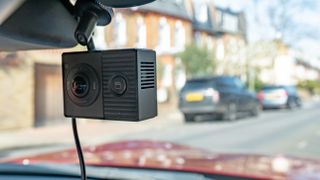
Almost all dash cams can be fitted to a car without making any permanent modification. They can be attached to a windscreen using a suction cup or removable adhesive pad, and powered from either a USB port or the 12V socket found in almost all cars. To test dash cams, we install them in our car, attach them to the windscreen and pair them to our smartphone as if we had bought them ourselves.
We then drive, at day and night, to test how the camera handles different lighting conditions, and ideally in varied weather too. The footage is then transferred to a smartphone or computer and viewed to check out the quality, and whether key details like vehicle registration plates are legible. This also gives us an opportunity to see how easy (or difficult) it is to view, transfer and save recorded footage.
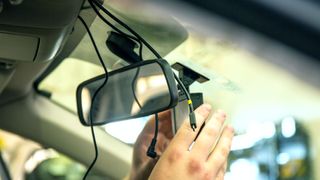
Additional features like voice assistants and drive assistance systems get a thorough workout, and we also test how easy it is to turn these off, or adjust them to our personal preferences. Being able to quickly and easily turn audio recording off is key, especially when carrying passengers who don’t want their conversations recorded.
Naturally, we cannot crash a vehicle to see how well the dash cam detects collisions. Instead, firmly tapping the dash cam can simulate a collision, allowing us to see what happens when footage is saved. It is also possible to trigger a recording by powering the camera with a portable battery and tapping it against our desk. It may seem rudimentary, but it works and keeps our insurance company happy.
Sometimes, driving over a particularly aggressive speed bump can trigger a dash cam recording. In these cases we learn that the camera’s g-sensor is too sensitive, and needs to be adjusted, providing the menu system includes such an option.
Why you should trust TechRadar
Our team of reviewers has decades of experience testing the latest technology. Having reviewed hundreds of camera products – including a huge range of dash cams – you can be confident that our expert team has an in-depth knowledge of what makes a product worthy of recommending.
We review each and every product before featuring it. When it comes to dash cams, each model goes through a series of real-world tests to assess factors such as ease of use, video quality and connectivity features. On average, we several weeks using each model in a range of driving conditions, to understand how it performs in the kind of scenarios you’re likely to encounter.
TechRadar has been dedicated to providing honest, impartial and reliable feedback and buying advice on the latest technology since 2008. For more information about our commitment to editorial independence, our IPSO regulation and the standards we uphold, check out our About Us page.
Get daily insight, inspiration and deals in your inbox
Sign up for breaking news, reviews, opinion, top tech deals, and more.

Tim is the Cameras editor at TechRadar. He has enjoyed more than 15 years in the photo video industry with most of those in the world of tech journalism. During his time as Deputy Technical Editor with Amateur Photographer, as a freelancer and consequently editor at Tech Radar, Tim has developed a deeply technical knowledge and practical experience with cameras, educating others through news, reviews and features. He’s also worked in video production for Studio 44 with clients including Canon, and volunteers his spare time to consult a non-profit, diverse stories team based in Nairobi. Tim is curious, a keen creative, avid footballer and runner, and moderate flat white drinker who has lived in Kenya and believes we have much to enjoy and learn from each other.
- Chris Rowlands
- Mark WilsonSenior news editor
